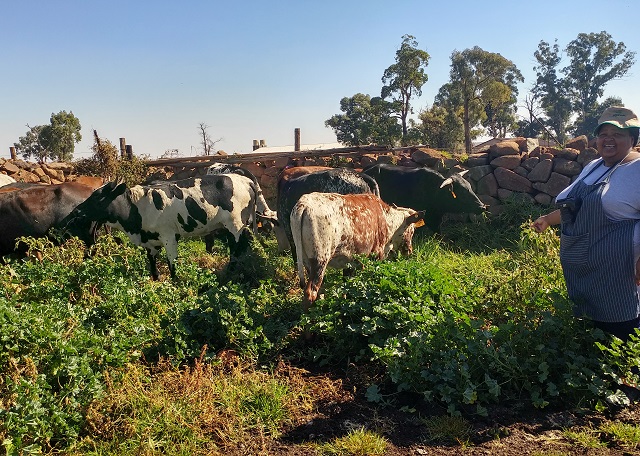Challenges of living in a climate-changed world

Emmanuel Koro
Our lifestyles have had to change because of climate change, including when and how we should grow crops, manufacture goods, build roads and houses and how we should travel.
Climate change, also called global warming, refers to the rise in average surface temperatures on earth. An overwhelming scientific consensus maintains that climate change is due primarily to the human use of fossil fuels, which releases carbon dioxide and other greenhouse gases into the air.
The gases trap heat within the atmosphere, which can have a range of effects on ecosystems, including rising sea levels, severe weather events, and droughts that render landscapes more susceptible to wildfires.
In a climate-changed world where we have changed the climate and in turn the climate has changed us, we can no longer have the luxury of building houses on open land and big gardens. Instead, we should go for densification to avoid urban sprawl, protect agricultural land and promote food security in environments where agriculture yields are reducing because of climate change. The good thing maybe is that it brings people closer together, so does the sharing of transport through lift club to cut down on carbon emissions.
We can no longer have the luxury of travelling to work in our own cars. Now we need to also travel by bus or train. Those who insist on privacy while travelling are now being advised to either walk or cycle to work or work from home.
Meanwhile, climate change signs such as floods, droughts, pests and diseases are becoming more significant, threatening people’s socio-economic wellbeing worldwide. Right here in Gauteng Province, South Africa’s richest Province, the Government has already started working on Gauteng Climate 2011 Change Response Strategy (GCCRS) and Action Plan. To ensure the success and sustainability of the strategy, regular monitoring and evaluation would be required to generate progress reports, based on which adjustments may be required to be made.
Change in cattle production approaches
Cattle production can also be negatively impacted by climate change, especially in a drought scenario. Therefore, the Gauteng Department of Agriculture GDARD has already introduced the drought-resistant Nguni cattle for breeding by rural farmers. One of them is Bronkhorspruit’s Ms Primrose Mogkatho who recently received her 30 cows and one bull.
“Ms Mokgatho’s Nguni cattle project is currently running smoothly and has had several calves born since the handover of Nguni cattle to her, in late 2017,” said GDARD Gauteng Nguni Project Manager Mr Sipho Mosegedi.
Introduced by the Gauteng Department of Agriculture and Rural Development (GDARD) in partnership with the Industrial Development Corporation (IDC) and the University of Pretoria in 2015, the Gauteng Nguni Cattle Project is meant to help local farmers breed Nguni cattle that are drought resistant and cheaper to manage, compared to other cattle breeds. The project loans 30 pregnant cows and a bull to the farmers who in turn need to make repayments within a five-year period by giving back the same number of cows they were given. This project is what climate change specialists popularly refer to as climate change responsiveness. About eight Gauteng emerging farmers, four of them female; have benefited from the project since its introduction in 2015.
Many meetings to solve problem
Now we should hold a lot of meetings at local, regional and international levels to find solutions to a man-made problem. We are no longer in control of our environment but must respond to it. Therefore, we are now taking a responsive and adaptation management of climate change effects.
Climate change trends in Africa and South Africa
For the African continent, studies are indicative of drastic increases in surface temperature occurring over the last five decades. Warming trends across southern Africa have tended to be up to double the global average over the past four to five decades. For South Africa, studies of historical temperature trends are indicating that South Africa has been warming significantly over the period 1931-2015. The strongest warming trends have been observed in the drier western parts of the country (Northern Cape and Western Cape) and in the northeast (Limpopo and Mpumalanga, extending southwards to the east coast of KwaZulu-Natal) – where the observed rate of warming has been 2°C per century or even higher – more than twice the global rate of temperature increase.
Vocabulary change
Climate change has brought change everywhere. Even our vocabulary has continued to change as climate changes. We now talk of never-used-before terms such as low carbon economy, climate smart, carbon foot print, green economy, waste economy, waste minimisation and beneficiation, decarbonisation of energy, national determined contribution, adaptation and mitigation tools. In agriculture, we now talk of climate change friendly inputs. Even the media that is tasked with communicating climate change issues is struggling with the climate change jargon and to communicate climate in ways that help make the public understand it better. That is just how we have literally messed up the world by causing climate change and we are now overwhelmed by the changes.
*Emmanuel Koro is a Johannesburg-based international award-winning environmental journalist who has written extensively on environment and development issues in Africa.








Comments